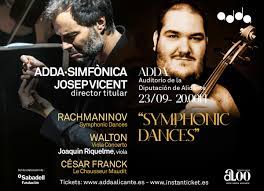Cakes And Ale by W Somerset Maugham is a profoundly surprising book. Written in 1930, the novel begins its story in the Edwardian age prior to the First World War. It comes, therefore, with the inevitable expectation that it will depict English society as a rather stuffy, perhaps dusty entity, full of flock wallpaper and aspidistras, tired after so many years of Victoria, but not yet woken up to the new world that the war so painfully introduced. But this is precisely where expectations could be wrong. In fact Cakes And Ale takes a rather liberated view of British society’s values, pokes fun at stiff convention and generally offers no moral judgment where other writers would surely lay on the presumption.
Cakes And Ale carries the subtitle The Skeleton In The Cupboard, without being absolutely clear whose skeleton is described, while the book certainly does not list many cupboards. One must presume that what is being referred to is the relationship between the privileged character William Ashenden and Mrs. Rosie Driffield, the wife of a novelist. Their time together begins when Ashenden is a boy, at least in his own eyes, and concludes many years later by which time both characters have reinvented themselves several times. It is a relationship that starts in platonic fascination, graduates to physical adulthood and concludes in seeming admiration at distance.
But overall, this relationship is allowed to blossom without the judgment on might expect it to receive, so skeletons remain hard to justify or identify. Equally, it could be Mrs. Driffield‘s long-standing obsession with a certain Lord George, but eventually this turns out to be sincere and long lasting. Mrs. Driffield certainly liaised with enough men to create several skeletons, but they would not have been in cupboards.
We follow William Ashenden from a self-identified childhood through adolescence and into adulthood. He too wants to become a writer and at least initially it is Mr. Driffield the novelist who interests him. At one stage, Ashenden laments the burden of having to describe his own experience in the first person. All writers, one supposes, love to inhabit that special heaven which allows convenient detachment and can put words into anyone’s mouth and feelings into anyone’s experience. Being merely oneself can be utterly restricting.
We first encounter this life while he is visiting his uncle on the south coast, in Kent to be precise, where Driffield the writer and his wife Rosie have moved in and are in the process of causing quite a local stir. General opinion is that Mrs. Driffield is rather common, a bar maid or of that ilk, and the suggestions are that she does not need classes in anatomy.
The moral indignation of the chattering classes is apparently unanimous. Mrs. Driffield puts herself about, especially in the direction of Lord George who is no lord, and the judgment is that anything in trousers is deemed of interest to her. And the indignation is not related to class, since the servants of the household where Ashenden stays are as vehement in their opinions as the boss, until they meet the sad Rosie, that is, and then their tone changes, for some reason.
Maugham has such a lower-class people drop their aitches and modify their vowels to such an extent that one wonders how they manage to say so many apostrophes. But Rosie Driffield thoroughly captivates the young lad. He becomes infatuated with her though he doesn’t realize it at first. For him, it’s merely growing up.
But the relationship changes from one of curiosity and interest to one of physicality and sex, but never does Somerset Maugham have either Ashington or Rosie regret what they are doing. Guilt seems not to be a destination in the London where they meet. They are merely human beings being human. And this is what is so surprising about the book.
Rosie eventually runs off with Lord George to the United States, where he makes a fortune and she becomes as respectable as she can possibly be first in New York and then in Yonkers, atop a significant fortune, which all goes to show something at least.
Though it is not explicitly stated, the United States
is portrayed in the book as a land where moralizing attitudes and gossip have
no place. Both Lord George and Rosie have moved there and have lived their
lives unaffected by social judgment. Back home in England, where one expects
judgment to be available by the stone, physical life continues to be denied,
but not in Cakes And Ale. The fact is that Rosie has risen above criticism, but
one must assume that she can only continue in that life out of Albion. Perhaps
it was her skeleton after all.










